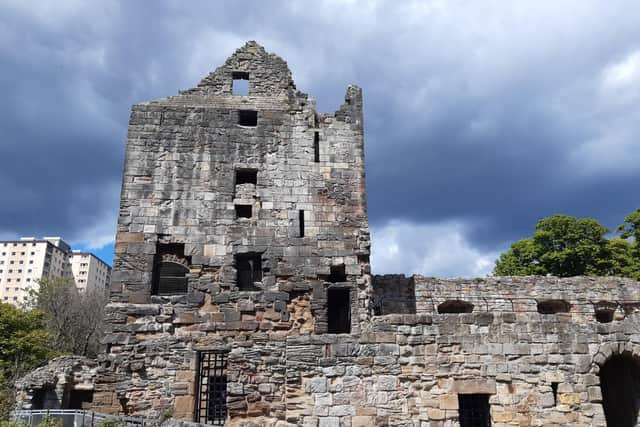The Scottish castle under siege from vandals
Ravenscraig Castle in Kirkcaldy, parts of which date to the 15th Century, has become a meeting point for people at night with the fabric of the castle becoming damaged as a result.
The historic site, which overlooks the Firth of Forth, has been surrounded by fencing in a bid to protect it, but this too has been damaged as people become determined to enter the property and its grounds.
Advertisement
Hide AdAdvertisement
Hide AdJoyce Kitching Tourism and Destination Development Manager at Historic Environment Scotland, said there had been an increase in such incidents at properties across its estate during lockdown.


At Ravenscraig, People are now known to have climbed to the top of the East Tower – some 45ft from the ground – to throw stonework taken from the castle walls.
She said: “The concern is that the behaviour gets worse and there is irreparable damage to the castle. We want people to enjoy the castle. If there is fencing going up and groups of people are gathering, it doesnt’ make for a pleasant experience for locals or visitors. It doesn’t reflect well on Scotland.
"It is our response to keep the castle safe for future generations. We don’t want to lose these wonderful assets.”
In recent times, a window grill on the first floor had been forced open with stonework damaged as a result.
Footage then appeared of two females who climbed onto the wall-head of the castle to perform a dance routine.
Others are known to have climbed up the East Tower and thrown wall-head stones from height.
A knife has also been found thrown into a castle cellar. Meanwhile, a people counter on an access bridge has been knocked off twice and will now not be replaced.
Advertisement
Hide AdAdvertisement
Hide AdMs Kitching said: “I just don’t think that whoever it is thinks about the consequences and thinks about the risks they are putting themselves at.
"We of course would hope that the building is stable but as more people climb up it, there is more risk causing more damage.”
Ravenscraig Castle was built after James II acquired the land in 1460 to create a residence for his wife . He died five months later.
According to Historic Environment Scotland, Mary pressed on with the castle’s construction regardless, and in 1461 it was completed to such a state where her house staff were able to stay there for 25 days.
Mary’s son, James III, granted the still-unfinished castle to William Sinclair in 1470 after he resigned the earldom of Orkney and lordship of Shetland to the Crown.
Mary died in 1463 and never saw the castle finished at Ravenscraig.
The Sinclairs turned it into a well-defended fort, which is protected in part by a large rock-cut ditch.
Where the great hall once sat over the central vaults, a gun platform was installed in the mid-1500s.
Advertisement
Hide AdAdvertisement
Hide AdIt is believed it may have been modified to help defend the Firth of Forth from English invasion.
Ms Kitching said Historic Environment Scotland was working closely with Police Scotland to protect it from its most recent threat.
